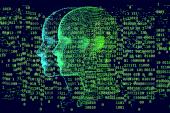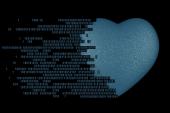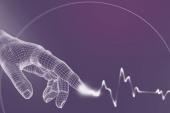EchoNet AI Algorithm Beats Sonographers for Estimating LV Function
In what investigators say is the first randomized, controlled trial of AI in cardiology, big data boosted accuracy and efficiency.

Blinded and randomized EchoNet interface (Photo Credit: David Ouyang)
BARCELONA, Spain—A deep-learning algorithm designed to identify local cardiac structures and estimate cardiac function does a better job than sonographer estimates at consistently measuring left ventricular function, results of the randomized, blinded EchoNet-RCT trial show.
According to David Ouyang, MD (Cedars-Sinai, Los Angeles, CA), who presented the trial results here at the European Society of Cardiology Congress 2022, the study is the first large randomized, controlled trial of artificial intelligence (AI) in cardiology. He said it shows a definitive advantage to using these kinds of algorithms to streamline workflow in the echo lab.
Because this was such a pioneering study, “we were actually initially quite conservative,” Ouyang said. “This was built as a noninferiority study, but it actually met that endpoint as well as met the endpoint of superiority, so we were quite pleasantly surprised to see that it was able to work so well. This shows that AI in certain cases is ready for prime time.”
Prior work by Ouyang and colleagues has demonstrated that the Echo deep-learning model can accurately measure cardiac function and identify subtle LV wall geometric measurements that could help with the diagnosis of often-missed conditions like hypertrophic cardiomyopathy and cardiac amyloidosis.
Blinded Review
For the current study, investigators set out to compare human measurements, by echo technicians, against those of the EchoNet tool for nearly 3,500 transthoracic echocardiograms. The trial included a run-in period during which sonographers alone annotated the scans prior to the cardiologist’s report, followed by a period in which scans were randomized to either the AI assessment or sonographer annotation before being sent to the cardiologist for blind review.
This shows that AI in certain cases is ready for prime time. David Ouyang
As Ouyang showed here, scans read by the AI tool were significantly less likely to be changed by the cardiologist. “Substantial” changes to the initial assessment were made in 16.8% of scans read by the algorithm, as compared with 27.2% of those read by a sonographer (P < 0.001 for both noninferiority and superiority).
In addition to being time-saving for the sonographer, cardiologists, too, spent less time with the scans interpreted by AI than with those done by technicians (median 54 vs 64 minutes; P < 0.001). In the majority of instances, cardiologists could not differentiate between the initial assessments made by AI and those made by echo technicians.
Of note, the algorithm was able to measure LV function accurately, regardless of the underlying pathology, Ouyang told TCTMD.
No One Leaves the Workflow
That doesn’t mean AI obviates the need for a sonographer, Ouyang stressed.
“A common question that is asked is: is this thing going mean that the sonographer or clinician is not useful? And the absolute answer is no,” he said. “We think of this as if the sonographer is able to use a calculator instead of an abacus. It speeds [the process] up for them and it speeds it up for the cardiologist, and it also makes people more precise. But there's no one being replaced in this workflow.”
I think AI will help make us better physicians, but it won't steal our jobs. Julia Grapsa
Instead, he said, “this automates a lot of the tedium that's required, or a lot of the things that we know we should be doing but unfortunately many people find really hard to do on scale.”
According to Ouyang, Cedars-Sinai will be deploying the EchoNet algorithm within the next few months. “There’s a lot of hype and a lot of excitement around AI, but really this is the first piece of very concrete evidence that this is ready for clinical use,” he said.
The Eye of the Clinician
Julia Grapsa MD, PhD (Guy’s and St Thomas’ NHS Foundation Trust, London, England), speaking with TCTMD, said that as she’s watched enthusiasm building for AI in a range of different imaging modalities, she's always felt that echocardiography "needs the eye of the clinician." For her, EchoNet-RCT hits the right note for combining artificial intelligence and clinician input, making it essentially “AI-assisted software.”
She sees it playing a particularly important role for the growing number of patients in whom precise and regular LVEF measurements are needed to guide appropriate care, notably patients with cancer and cardiovascular disease or those being considered for cardiac resynchronization therapy.
“To me this opens a new horizon on those patients where we need to care about accuracy in measurements,” she said, citing populations where follow-up is critical. “Even a 5-percent difference in EF can make a huge difference in care.”
Importantly, she agreed with Ouyang that people should see this as a tool for improving accuracy and efficiency: “I think AI will help make us better physicians, but it won't steal our jobs.”
Shelley Wood is the Editor-in-Chief of TCTMD and the Editorial Director at CRF. She did her undergraduate degree at McGill…
Read Full BioSources
Ouyang D. EchoNet-RCT: Safety and Efficacy Study of AI LVEF. Presented at: ESC 2022. August 27, 2022. Barcelona, Spain.
Disclosures
- Ouyang and Grapsa reported no relevant conflicts of interest.





Comments